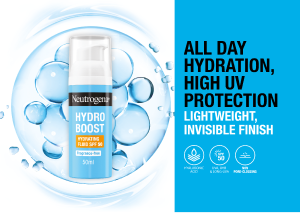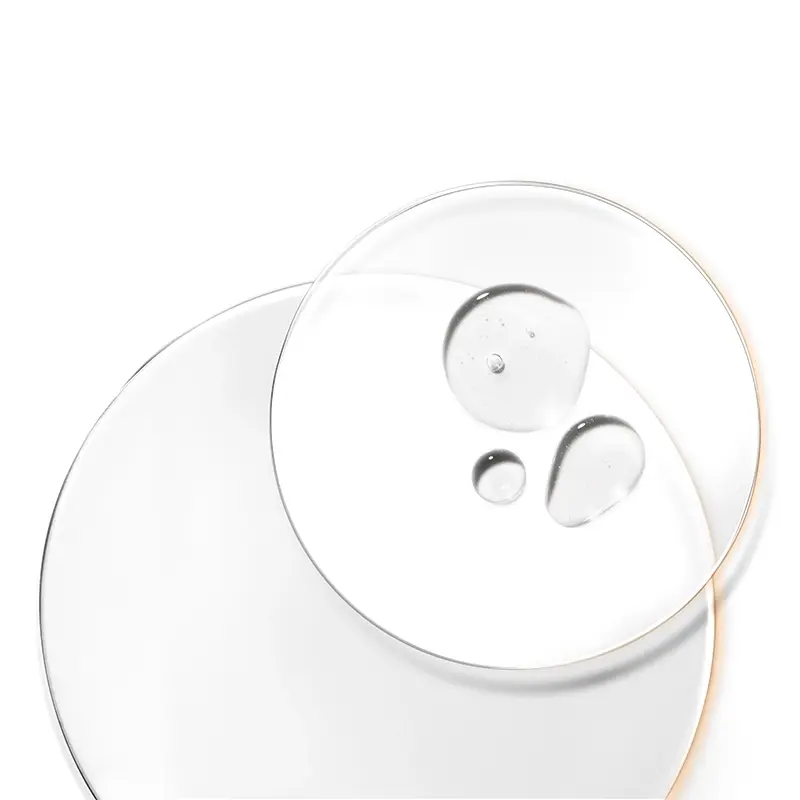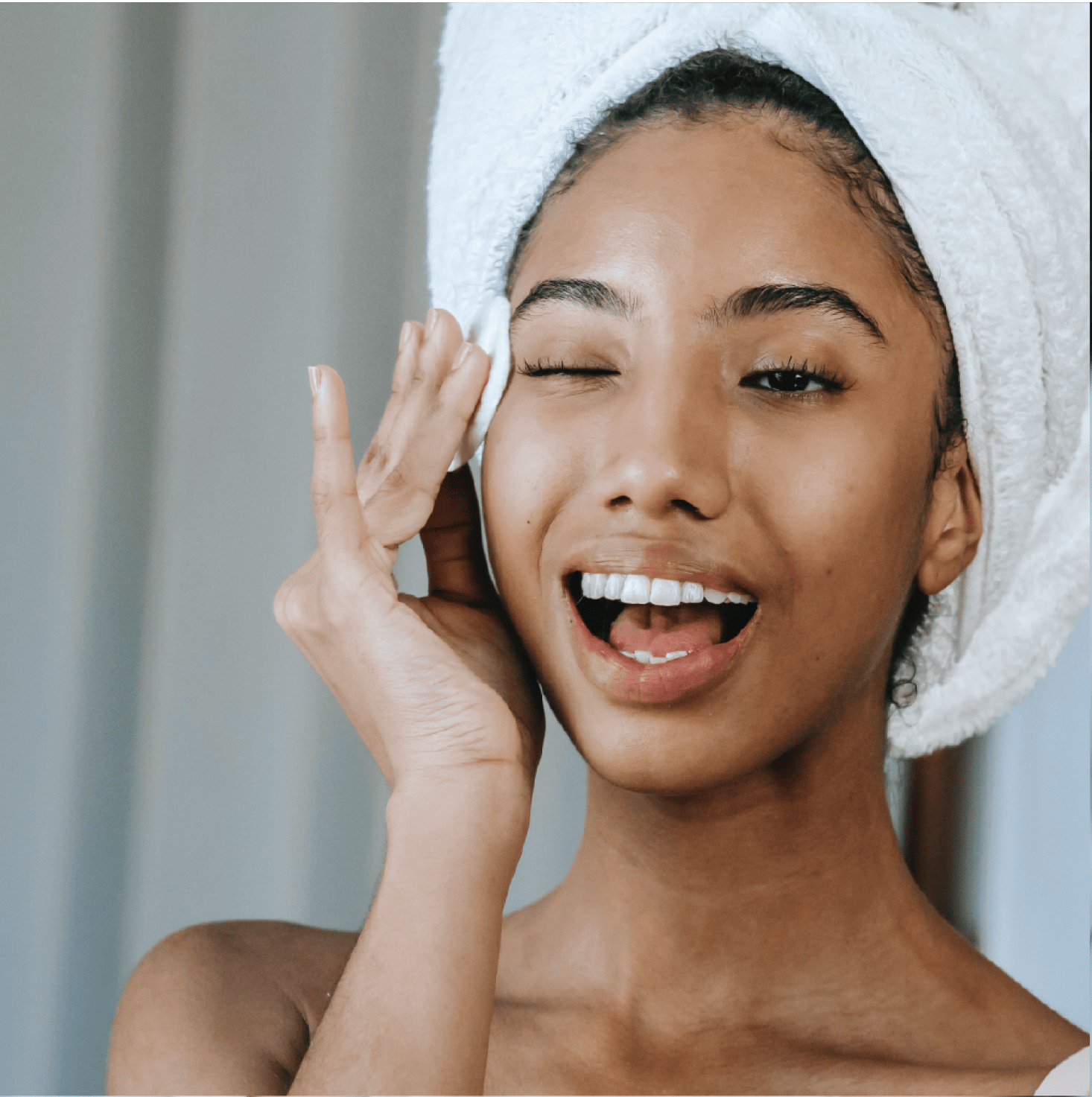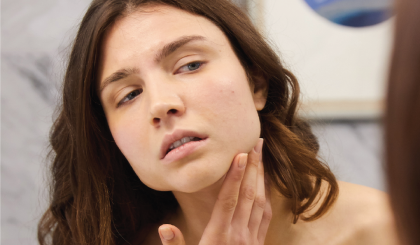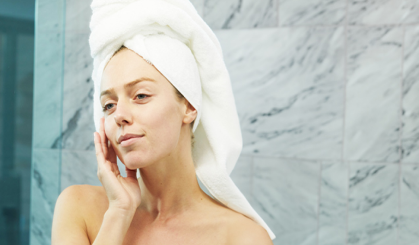Blemishes happen – especially on the areas where the body has the most oil glands, such as the face and neck, back, chest and shoulders. Almost everyone will experience breakouts at some point, but the good news is there are ways to help prevent them and keep your skin looking clear and radiant.
A consistent skin care routine and the right products are the most common ways to clear up blackheads and blemishes and to help prevent future breakouts. However, sometimes it can be difficult to know exactly what you need to keep your skin looking clear and healthy. Here, we’ll explore the various options and offer some top tips on how to get clear skin.
In this guide:
What are blemishes?
When we talk about clear skin, we typically mean skin that is free from blemishes. There are different types of blemishes, including:
Rough, uneven skin
Blemishes aren’t restricted to the face, either. They can also appear in different places on your body, including the back, neck, chest, and shoulders.
What does clear skin look like?
Clear skin is free or mostly free from blemishes, with barely visible pores and few or no imperfections. It has a radiant complexion and no severe sensitivity.
You’re more likely to have clear skin if you have a normal skin type – which means it’s neither too oily nor too dry. However, there are steps you can take to keep skin looking clear and healthy, no matter what your skin type.
What can cause blemished skin?
There are various factors that can cause blemishes to appear on the skin, which can prove an obstacle if you want to address blemished skin and achieve a clear complexion. Spots occur when oil naturally produced by the body (known as sebum) becomes mixed with dead skin cells and plug the pores (hair follicle) These appear as whiteheads or blackheads depending on whether the pore is closed or open to the air. If the follicles become infected with bacteria on the skin, spots can become red and swollen.
Factors that can increase your risk of blemished skin include:
Stress: this can affect a variety of skin conditions, including acne, eczema and psoriasis.
Hormonal changes and aging: which can exacerbate both dry and oily skin types.
Certain cosmetic and skincare products: some products contain oils or other ingredients that can block pores.
Environmental factors: including the weather, which can encourage excess oil production and lead to blemishes. This can also result in moisture loss from the skin, leading to dry, rough patches.
Poor diet: this can play a role in causing breakouts and blemishes, although it’s only a relatively small part of the picture.
How to get rid of blemishes: Our 8 top clear skin tips
The good news is that, with a good skincare routine and a few simple lifestyle changes, you can be on your way to having radiant, blemish-free skin. Here are eight top tips to help you achieve the clear skin you want:
1) Cleanse your face
Blackheads and blemishes are common. A simple yet effective routine to help clear blemishes on the face is to wash it twice a day with a gentle cleanser: when you wake up and before you go to bed. This helps to remove dirt, bacteria, and oil build-up, as these are the real culprits that clog pores and cause breakouts. Plus, always wash your face right after exercising to remove excess sweat.
Using an oil-free cleanser like NEUTROGENA® Oil Balancing Face Wash removes excess sebum and helps to prevent clogged pores to reduce the risk of blackheads and other similar blemishes. You should also choose products that are oil-free and non-comedogenic and resist the urge to scrub areas prone to spots and blemishes. Instead, cleanse gently with a mild cleanser and warm water to reduce the risk of irritation.
2) Find out your skin type
Everyone’s skin is different, so knowing what your skin type is can be essential before you begin adding new products to your skincare routine. There are three main skin types – dry, oily, and normal – although some people may have what is known as a combination skin type, which can have characteristics of all three.
Although all skin types will need to be cleansed and moisturised regularly, understanding your skin’s type and its needs will help you find skin care products that are best suited to you.
3) Tailor your skincare routine
Once you know your skin type, you can develop a skincare routine with tailored products to help you keep a healthy-looking, clear complexion. For example, people with blemish-prone skin may want to add salicylic acid products to their skincare routine to help prevent whiteheads and blackheads. Those with oily skin may find a mild toner helps to rebalance their skin’s pH and even out skin tone. Just dab a small amount on a cotton ball and wipe over your face after cleansing.
Similarly, if you have dry skin, you might benefit from regular use of a rich moisturiser to help repair the skin barrier. This should be applied after cleansing and as required throughout the day. Our Hydro Boost range is rich in glycerine and hyaluronic acid, making it an ideal choice for strengthening the skin barrier and preserving the skin’s glow .
4) Utilise the right face masks
Face masks are a great way to provide an intense boost to your skin. There are different types of mask, such as sheet, peel-off and clay, and they contain different active ingredients targetted for specific skin needs. So, the right one for you will depend on your skin type, needs, and goals.
For example, people with oily skin may want to try our NEUTROGENA® Clear & Defend 2 in 1 Wash-Mask , which has been developed with dermatologists and has an oil-free formula for spot-prone skin.
The active ingredients you should look for will depend on your skin type and the results you’re aiming for:
Dry skin – hyaluronic acid to rejuvenate and hydrate.
Oily/spot-prone skin – salicylic acid to purify the skin and help defend against new breakouts.
Ageing skin – vitamin C to help boost collagen and deliver a youthful glow.
Skin prone to redness – masks that contain niacinamide to help soothe redness, rosacea, and blotchiness.
Pigmentation/dark spots – kojic acid or soy ingredients to soothe hyperpigmentation and reduce the effects of sun damage.
Whatever your skin type, you should look for products that are hypoallergenic to reduce the risk of irritation.
5) Always moisturise
Even if your skin is oily, you should still moisturise every day to help keep your skin hydrated. Applying a lightweight moisturiser regularly helps maintain your skin’s natural moisture and leaves your skin feeling soft.
6) Apply sun protection
Sunscreen is essential whenever you spend time outdoors, as the sun can cause damage to your skin, including age spots and premature wrinkles.
Look for labels that say ‘noncomedogenic’, as these will be less likely to clog the pores and lead to blemishes.
7) Avoid touching your face
To avoid spreading bacteria and increasing the levels of oil in your skin, you should resist touching your face throughout the day. Try not to lean your chin on your hand or otherwise touch your face unless necessary, and always wash your hands before you do so – especially after exercise if your hands are sweaty.
You can also use earbuds when talking on the phone rather than letting the phone rest on your cheek to help prevent spreading oil, dirt, or bacteria onto your skin.
8) Eat a balanced diet
While poor diet doesn’t cause spots in itself, a well-balanced diet containing plenty of fruit and vegetables will help you stay healthy – and that includes your skin.
You can add certain food groups or vitamins into your meals to help achieve specific skin goals. For example, eating more foods that contain vitamin C – like citrus fruits – can help encourage fast skin renewal and healing. You should be able to continue to enjoy all your favourite foods in moderation without it affecting your skin. However, if you notice certain ingredients, such as sugar or dairy products, often lead to a breakout, it’s best to avoid them.

